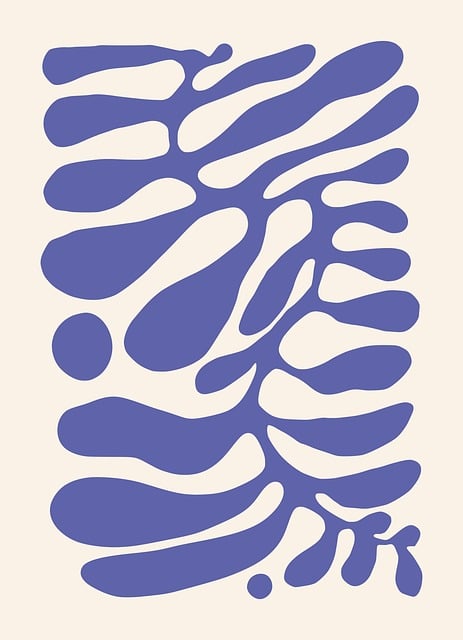Graphic Design is a creative process that blends aesthetics and functionality across print and digital platforms. Designers use principles like composition, hierarchy, and layout to guide viewers' attention and convey messages effectively. Traditional techniques range from hand-drawing to advanced Photoshop manipulations, while modern trends emphasize minimalism and interactive elements. The digital revolution has democratized design through accessible software, transforming graphic design into a dynamic field that leverages technology for innovative solutions. Understanding the differences between print and digital mediums is crucial for successful communication. Branding and identity are key aspects, with designers creating cohesive visual experiences across various platforms to build trust and engage audiences. Case studies like Nike's "Just Do It" and Airbnb's redesign offer insights into effective design strategies. Future trends include AI, sustainability, and accessibility, ensuring graphic design remains versatile and impactful in the digital age.
In the dynamic realm of visual communication, graphic design serves as a powerful tool to convey messages and shape perceptions. From traditional print media to the digital landscape, this art form continues to evolve and captivate audiences. This comprehensive guide explores various facets of graphic design, delving into its foundational concepts, historical techniques, and modern innovations. We examine the rise of digital tools, the importance of visual storytelling, and how designers navigate the ever-changing print vs. digital debate. Discover the impact of branding, analyze real-world case studies, and gain insights into future trends shaping the graphic design industry.
Understanding Graphic Design: A Comprehensive Overview

Graphic Design is a multifaceted creative process that involves conceptualizing and executing visual concepts to communicate messages effectively. It’s an art that blends aesthetics and functionality, utilizing elements like shape, color, typography, and imagery to create visually appealing and impactful designs. In both print and digital mediums, graphic designers play a pivotal role in shaping communication, from branding and marketing materials to user interfaces and publications.
Understanding Graphic Design requires grasping its fundamental principles, including composition, hierarchy, and layout. Designers use these principles to guide the viewer’s eye through a design, ensuring key information is emphasized while maintaining a balanced and harmonious aesthetic. Whether crafting a captivating poster, a sleek website, or an engaging social media campaign, the ultimate goal is to convey a brand’s message or tell a story in a visually compelling way that resonates with the target audience.
Traditional Print Graphic Design: Techniques and Trends

In traditional print graphic design, a multitude of techniques have been honed over decades, offering designers a rich palette to create visually stunning content. From intricate hand-drawing and illustration to sophisticated photoshop manipulations, each method adds its unique character. Designers expertly employ typography, color theory, and layout principles to convey messages effectively across various print mediums like brochures, magazines, and advertising posters. The trend towards minimalism, clean lines, and flat design has gained traction in recent years, prioritizing simplicity and readability.
However, the digital revolution has not left print behind; instead, it’s pushed designers to explore innovative hybrid approaches. Integrating QR codes, augmented reality (AR), and interactive elements into printed materials now enhances user experiences. This fusion of traditional skills with modern technology ensures that graphic design remains a dynamic field, constantly evolving to meet contemporary demands.
The Rise of Digital Graphic Design: Tools and Software

The digital revolution has undeniably transformed the landscape of graphic design, propelling it into a new era where creativity meets technology. Digital graphic design has become an integral part of our daily lives, from visually appealing social media feeds to intricate websites and interactive user interfaces. This shift towards digitalization has democratized the creative process, allowing designers, entrepreneurs, and enthusiasts alike to create stunning visuals without the need for traditional printing presses.
The rise of advanced tools and software has been pivotal in shaping this evolution. Designers now have access to a plethora of digital platforms that offer intuitive design interfaces, robust editing capabilities, and an array of pre-made templates. These tools often come packed with features like vector graphics, photo manipulation, typography customization, and 3D rendering, enabling designers to bring their visions to life with relative ease. Furthermore, cloud-based collaboration platforms facilitate real-time teamwork, making it possible for global design teams to contribute seamlessly to projects.
Visual Communication: Crafting Compelling Designs

Visual communication is a powerful tool that graphic designers wield to convey messages and engage audiences. In both print and digital mediums, designers craft compelling designs that transcend mere aesthetics. Through strategic use of typography, imagery, color, and layout, they create visuals that capture attention, evoke emotions, and transmit information effectively.
In the realm of graphic design, the goal is to transform data and ideas into visually appealing and meaningful content. Whether designing a vibrant poster for a local event or an intricate digital illustration for a brand, designers must consider their target audience, intended message, and the overall visual narrative they want to convey. This artful process involves balancing creativity with clarity, ensuring that designs not only look stunning but also serve their purpose in the most impactful way possible.
Print vs Digital: Key Differences and Considerations

When it comes to Graphic Design, whether for print or digital mediums, understanding the key differences is essential for effective communication and delivering the intended message. Print design involves physical materials like paper, ink, and finishes, allowing designers to work with textures, colors, and layouts that are tangible and immediate. It offers a lasting impression, often requiring careful consideration of production methods and material choices. Digital design, on the other hand, operates in a virtual space, focusing on screens, pixels, and various digital platforms. This medium allows for flexibility, interactivity, and dynamic content, making it ideal for reaching audiences through websites, apps, and social media.
Designers must consider how these mediums differ in terms of visual perception, user interaction, and technical capabilities. For instance, color reproduction, resolution, and file formats vary between print and digital, requiring specific adjustments to ensure optimal results. In graphic design, understanding these distinctions enables creators to make informed decisions regarding style, format, and delivery method, ultimately enhancing the overall impact and engagement of their work.
Branding and Identity: Building a Consistent Visual Narrative

In the realm of graphic design, branding and identity are the cornerstones of a successful visual narrative. A well-crafted brand identity ensures that a business or organization is instantly recognizable through consistent visual elements such as colors, fonts, and imagery. Graphic designers play a pivotal role in translating the essence of a brand into a unified and compelling visual language.
By integrating these design principles across various mediums, whether print or digital, designers create a cohesive brand experience. In today’s digital era, this means not only designing visually appealing websites, social media graphics, and advertising materials but also ensuring that the brand identity translates seamlessly from physical products to online platforms. This consistency builds trust and fosters a stronger connection between the brand and its audience.
Case Studies: Successful Print and Digital Graphic Design Campaigns

Successful print and digital graphic design campaigns offer valuable case studies for designers looking to elevate their work. One standout example is Nike’s “Just Do It” campaign, which seamlessly integrates compelling visuals across various mediums. Their strategic use of bold typography and dynamic imagery has not only become synonymous with the brand but also inspired countless design projects worldwide. By studying this campaign, designers can learn the power of a cohesive visual language that resonates with audiences across different platforms.
Another notable case is Airbnb’s redesign effort, which aimed to modernize its brand identity while maintaining accessibility. The updated logo and visual system effectively communicate a fresh, approachable image, enhancing user engagement. This campaign demonstrates how thoughtful graphic design can simplify complex information and create a unified experience for users interacting with a brand both online and offline. These real-world examples highlight the versatility of Graphic Design in driving brand success and captivating audiences.
Future Trends: Evolving Role of Graphic Design in the Digital Age

In the digital age, graphic design continues to evolve at a rapid pace. As technology advances, designers are increasingly leveraging AI and machine learning algorithms to streamline processes like layout creation and color palette generation. Virtual and augmented reality technologies also present exciting opportunities for immersive design experiences, opening up new avenues for creativity in advertising, branding, and user interfaces. The integration of Internet of Things (IoT) devices further blurs the lines between physical and digital spaces, demanding innovative design solutions that cater to connected devices and smart environments.
The future of graphic design will also be characterized by a stronger emphasis on sustainability and accessibility. Designers are expected to adopt eco-friendly practices in their workflows, from using recycled materials for print projects to optimizing digital assets for reduced environmental impact. Additionally, ensuring designs are accessible to diverse audiences, including those with visual impairments, becomes increasingly important. This shift towards inclusive design not only aligns with ethical considerations but also expands the reach and appeal of graphic design work.
